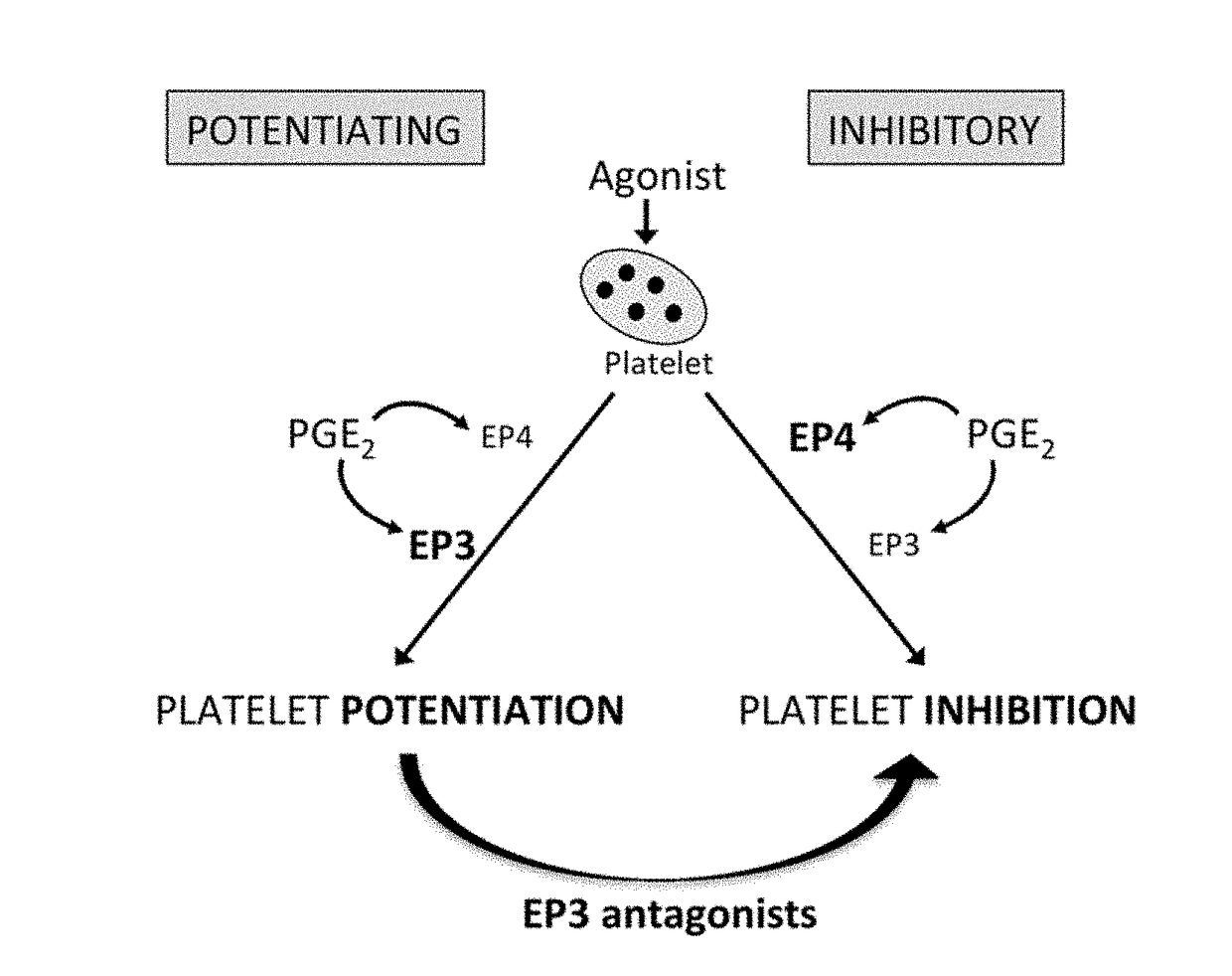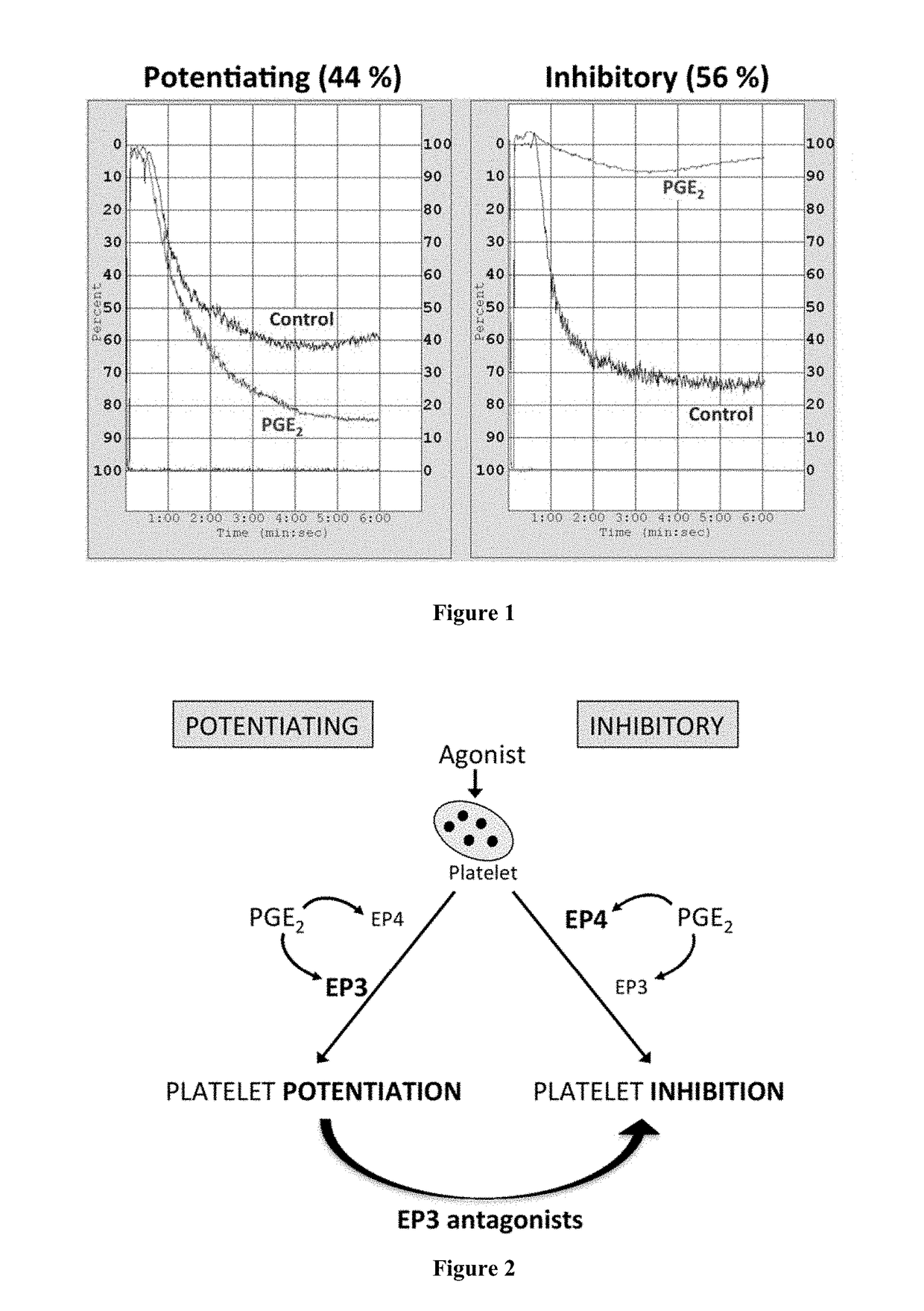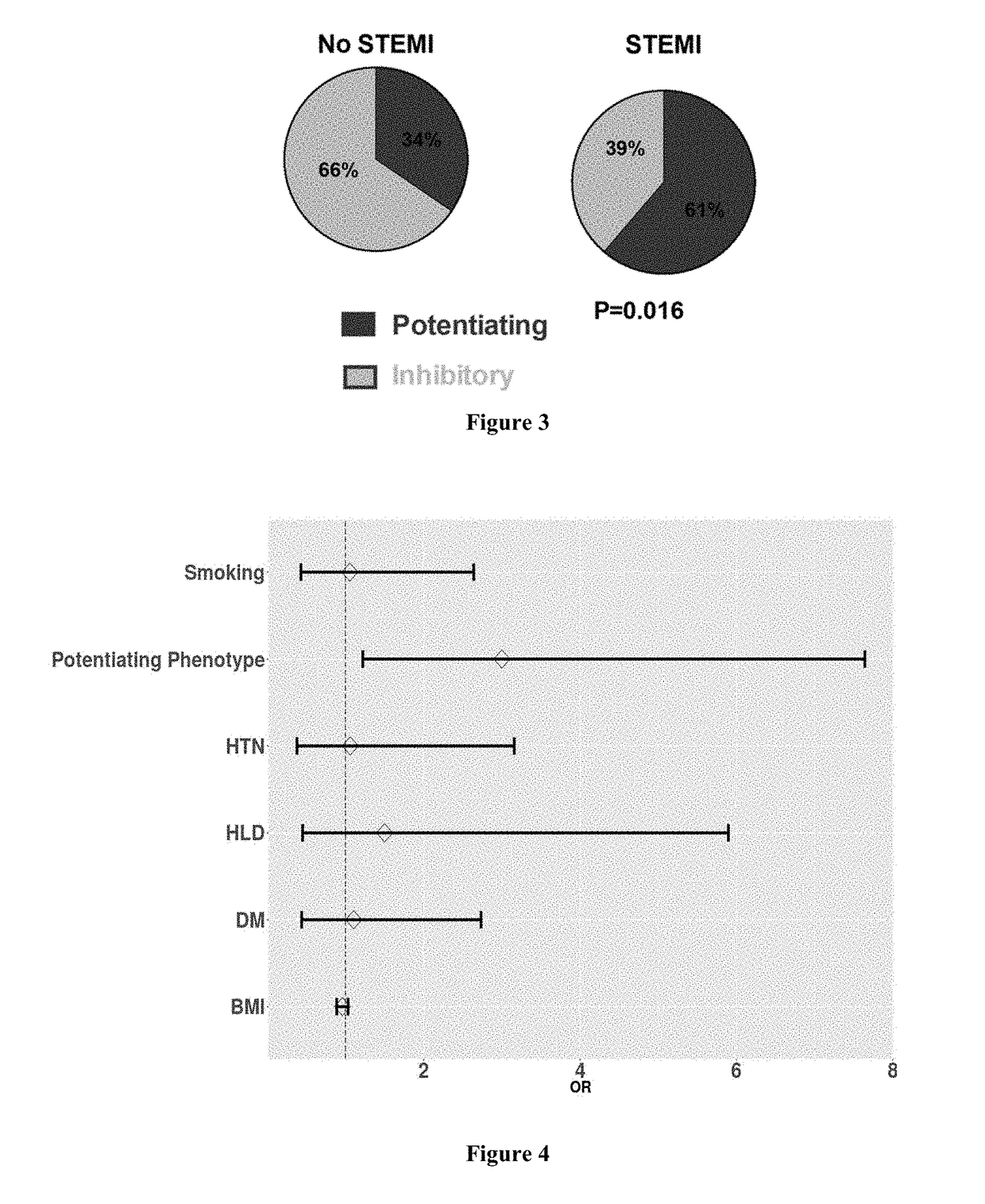Method for Identifying Subjects with Increased Risk of ST-Segment Elevation Myocardial Infarction (STEMI) and Identifying Subjects Likely to Respond to Particular Treatments
- Summary
- Abstract
- Description
- Claims
- Application Information
AI Technical Summary
Benefits of technology
Problems solved by technology
Method used
Image
Examples
examples
[0058]Prostaglandin E2 (PGE2) is an endogenous substance produced by macrophages in atherosclerotic plaques and by activated platelets [6]. In healthy volunteers, PGE2 increases the threshold of platelet activation by the thromboxane agonist U46,619 in 44% of individuals (potentiating phenotype) and decreases this threshold in 56% (inhibitory phenotype) (FIG. 1). These effects result from the net activation of two PGE2 receptor subtypes, EP3 and EP4. Further, an EP3 antagonist can shift phenotype from potentiating to inhibitory (FIG. 2). The present inventors contemplated that individuals with the potentiating phenotype, who have lower thresholds to platelet activation, would be at greater risk for STEMI.
[0059]Methods:
[0060]Patients and Blood Collection
[0061]The study was approved by the Vanderbilt University Institutional Review Board. Eighty-six patients were enrolled, who were undergoing percutaneous coronary intervention in the Vanderbilt cardiac catheterization laboratory for s...
PUM
 Login to View More
Login to View More Abstract
Description
Claims
Application Information
 Login to View More
Login to View More - R&D
- Intellectual Property
- Life Sciences
- Materials
- Tech Scout
- Unparalleled Data Quality
- Higher Quality Content
- 60% Fewer Hallucinations
Browse by: Latest US Patents, China's latest patents, Technical Efficacy Thesaurus, Application Domain, Technology Topic, Popular Technical Reports.
© 2025 PatSnap. All rights reserved.Legal|Privacy policy|Modern Slavery Act Transparency Statement|Sitemap|About US| Contact US: help@patsnap.com



